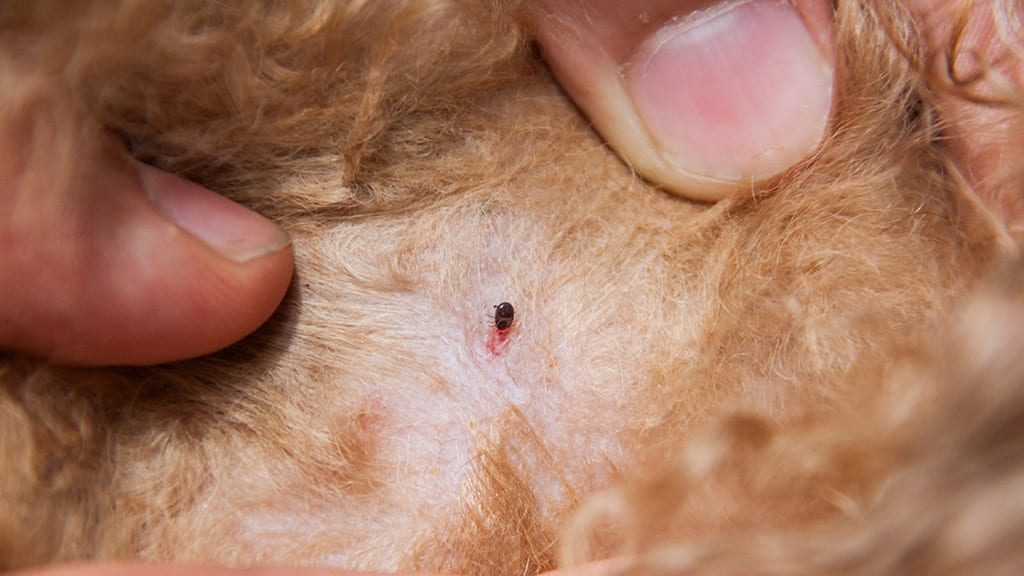Dogs are creatures we admire for their lovely smooth fur and coats. In the same way, fleas are also fond of dogs.
There are enormous chances of occurrence of fleas in dogs as it is very likely that dogs will come in contact with parasites some time in their lives.
It is not hard to deal with this phenomenon; just some knowledge about fleas in dogs can help you treat them.
Table of Contents
Best 5 Dog Flea Products
| Editor’s Picks | Product | Rating |
| Best Overall | Bayer Animal Health Seresto Flea and Tick Collar | 4.6 |
| Runner Up | Rolf Club 3D FLEA Collar for Dogs | 4.5 |
| Best Dog Collar For Ticks | Virbac Preventic Collar | 4.4 |
| Best Natural Dog Flea Collar | Petsmont Premium Care Flea And Tick Collar For Dogs | 4.0 |
| Budget-Friendly Buy | HARTZ Ultraguard Flea and Tick Collar | 3.8 |
What Are Dog Fleas?
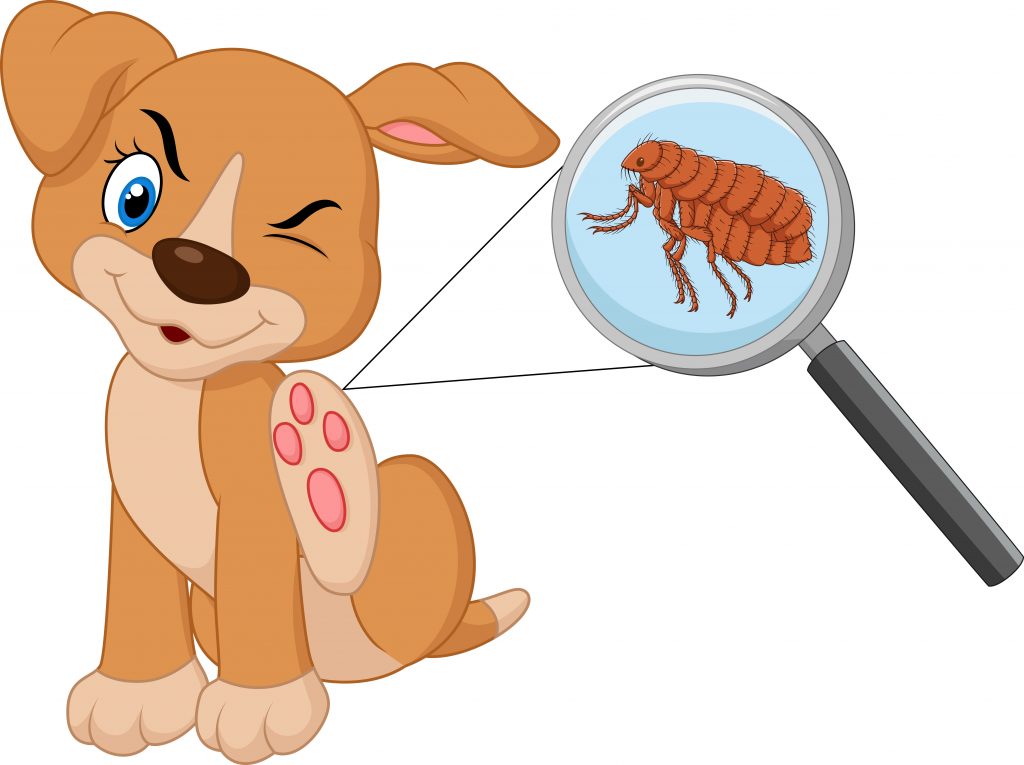
Fleas in dogs are commonly a form of parasites that infest dogs when they come in contact. Fleas have a lifespan of around 7 – 14 days and are tiny in size measuring 1 – 2mm in length.
They usually lay eggs while residing on your dog’s fur. The eggs are 1/2 millimeters in length, white in color, and ovular in shape.
When they hatch, they enter the larval stage. These larvae live inside the dog’s bed, the upholstery and the carpets where they metamorphize into pupae.
The pupae will survive for many months until you can come to know about their existence. After they start feeling warm and unstable, they will usually turn into adults and find life inside a host. In this way, they start their life cycle again.
Regardless of the cleanliness in your house, if there is a flea on your dog, then certainly there are hundreds of others throughout your home.
The fleas in dogs are capable of transmitting illnesses and are the usual culprits of skin conditions in dogs. Some skin allergies such as flea allergic dermatitis (FAD) are signs of fleas in dogs and are caused by bites.
Fleas spawn and thrive in late summer because of the presence of hot temperatures and high humidity. However, keep in mind that central heating in winter will have the same impact.
What do Fleas In Dogs Look Like?
The mouth of fleas is built especially for absorbing blood and cutting the skin in dogs. They are parasites that reside on the external part of the dog’s body by living off the blood of dogs.
In the region of fleas’ existence, dogs may experience skin itching. Having laterally compact structures, they are stone-hard and do not possess wings. They compose of spine and hair, that facilitate their movement through dog hair.
In order to jump, they use elongated rear legs. The head of fleas in dogs is rounded rather than long-form. The hind legs are divided into 8 sections rather than the commonly seen six in other parasites.
To the naked human eye, they are just a spec, however. They appear dark brown in color and are 1 – 2mm in length. You may observe them on carpet or you might encounter them while combing your dog.
To verify them closely, just put them into a moist tissue and check if they turn red. If they do, they are fleas.
How to Know Whether My Dog Has Fleas?
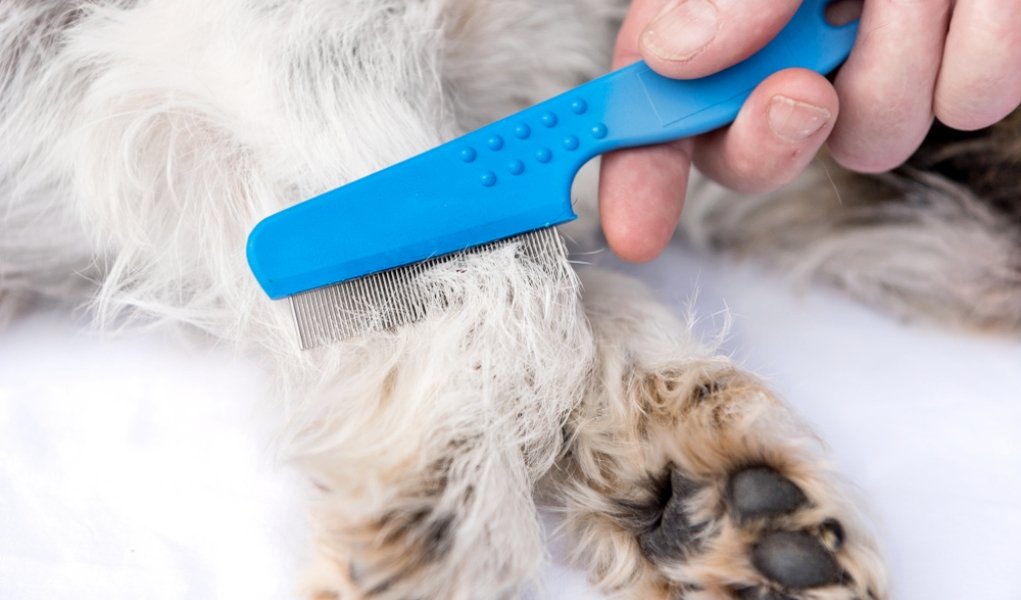
Even if your dog is plagued by fleas, it may not always be easy to find out. To test their presence, just search flea dirt (the feces of fleas) in your dog’s fur. To check comb the dog’s hair such that the dirt falls on a bright colored paper.
Black dirty and tiny lumps will be captured by the paper if fleas exist. When you put these black flecks on moist cloth, they will form red. The redness is because of the bloody fecal excretion of the dog.
Suggested: Tularemia in Dogs
Symptoms of Fleas in Dogs
Just as the infestation of fleas in humans, fleas can occur in dogs and it is highly dangerous. The effects of flea infestation vary from low-degree to high-degree. Mild symptoms include skin discomfort, itching, and infections.
Severe symptoms include anemia, which is caused by flea bites in the worst situations. Fleas also aid in transferring disease-causing tapeworms to other dogs and pets.
Bleeding bumps spawn because fleas have bitten your dog. Dogs tend a lot to bite and scratch themselves when they are attacked by fleas. The areas that the dog’s target are usually the neck, head, and regions surrounding the tail.
The fleas are gathered usually in such regions. The relentless biting and scratching may result in the dog’s skin turning inflamed and red. You can remark this when you separate the fur and expose the dog’s skin.
The FAD (flea allergy dermatitis) happens to dogs who have an allergy to the saliva of the flea. The symptoms in this scenario are the same but more severe.
Due to excessive scratching and biting, the dog’s hair may fall and never grow. He may get bald spots, harbor foul-smelling skin infections, and suffer hot spots giving rise to drastic skin irritation.
The bald spots can be formed by over-grooming of the dog. The subsequent area may give an ugly look to the dog. Reds and scabs form on the sore regions of the skin due to allergies to fleas.
Frequent grooming is not a remedy for this solution but will be helpful in making you aware of the symptoms and later useful in carrying out an effective treatment for fleas in dogs.
Your dog may excessively chew in order to fight fleas. You may also observe small fleas going up your dog’s fur. Excessive licking of the affected area is another concern of infected dogs.
If you observe white specks on the dog’s fur, it is the sign of the presence of fleas. These white specs are nothing but white eggs laid by the fleas themselves.
Anemia is an extremely severe symptom of dog fleas. Fleas can ingest blood far more times than their own weight. When dogs lose excessive blood, they suffer anemia, which drastically reduces the number of red blood cells.
When you see lethargy and low energy, or the formation of pale gums in dogs, it is with certainty that anemia has formed in your dog.
Prevention and Treatment for Fleas in Dogs

There are a wide variety of products available for treating fleas. On the other hand, there are natural and home remedies as well.
The ideal dog flea treatment is prevention and not cure. If your dog shows the presence of fleas, you should treat your home by using the spraying technique that deals with spray infestation.
The eggs of fleas lie inactive for many months in the crevices and holes of your house.
Use vet-recommended high-quality flea control application. These controls can be gotten without much hassle as they are readily available in the environment. More than one product is required for the effective treatment of fleas.
In weaker dogs or younger dogs, the chances of the occurrence of anemia are more and hence fleas are a severe health risk.
What Should I Keep in Mind During Treatment?
The sooner you get the dog treatment done, the better it will be. The little parasites only stay there for a limited time. On the side portions of chairs, the eggs of fleas usually take form and remain alive for nearly a year.
Thus, not only your dog himself but also furniture and upholstery in the house need to be dealt with the spraying of aerosols as soon as possible.
Not only these, if you have other pets in your home, but they will also need treatment too. However, you would have to consult specific vets to find the right products for your other pets as products differ for different species.
Some products useful for your dog may be poisonous for other pets and the inverse can also be true.
How to Get Rid of Fleas in Dogs?
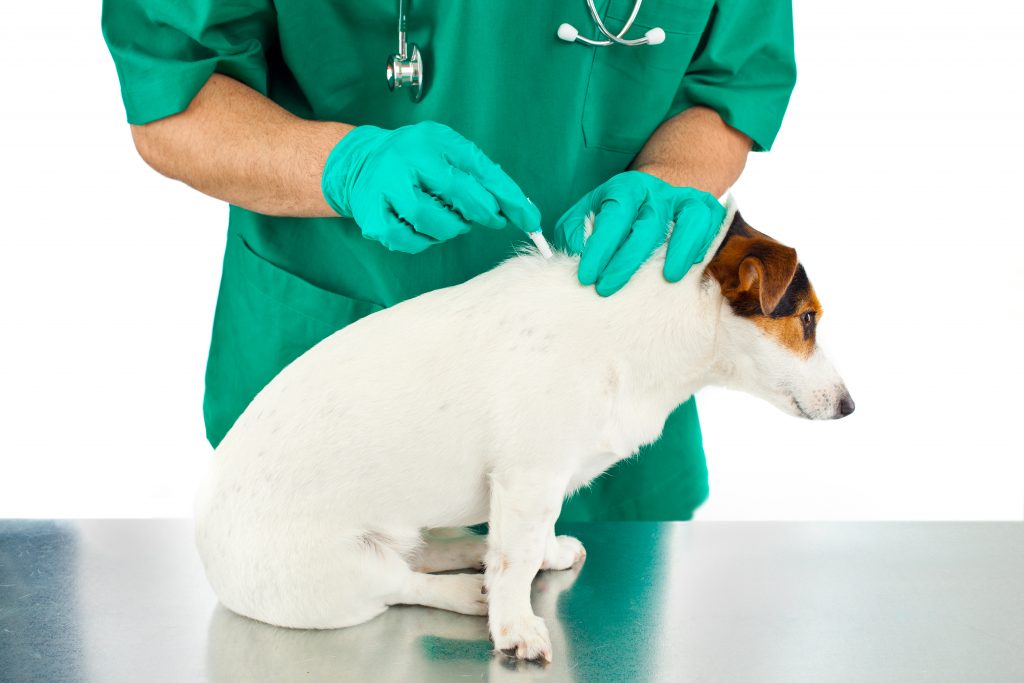
You can see a huge diversity of commercial as well as natural products available in marts and stores.
It is more advisable to ask a veterinarian for insecticides and medicines for fleas in dogs as they are better at having a long-time impact on the dog.
Also prior to using any commercial or natural products, it is best to consult a veterinarian to be on the safer side.
Treating Fleas In Dogs With Spot on Treatments
In the use of spot-on items, the liquid is spread on the skin and smoothened at the hind side of the dog’s neck. These techniques have become very famous and impactful as the best treatment for fleas in dogs.
A few products available in the market assist in eliminating fleas who are adults, whereas yet other products act to halt the further progress of fleas. Still, some items do both of these functionalities.
The advantage of this treatment is that it destroys and avoids the growth of ear mites in dogs.
Treating Fleas In Dogs With Tablets and Injections
Another nice alternative for spot-on treatments is the medicinal treatment that is given in the form of injections and tablets. These work also when you are stuck in the challenge of applying the spot-on treatment.
These medicines operate by stopping the transformation of eggs into fleas, whereby eradicating the potential subsequent generations of fleas to come into existence.
Treating Fleas With Combs
Keep in mind that this technique does not prevent the occurrence of fleas in your dog and the perfect solution for flea control. If you have a suspicion of the presence of fleas, you can use combs to your advantage.
Only if a large number of fleas are present in your dog can you successfully use combs. The teeth of the comb should be fine because these types of combs are more precisely applicable.
Combs help you remove black specks from the dog’s fur. Put a white surface beneath it. Put specks onto a moist cloth. If the reddish-brown particles stick their, they are the feces of fleas. Thus, you have discovered the existence of fleas in your dog.
Flea Treatment Powder
The powders to eliminate fleas stay only up to a certain number of days. Moreover, they can only destroy adult fleas and not larvae. Hence, they are ineffective as long-term solutions and are not the ideal treatment option.
Flea Collars
Flea collars possess substances that stop growth. Still, these are not the ones to be fully dependent upon. Side effects include irritation to dogs.
This technique is recommended by a veterinarian, should be given a green signal and its quality should be verified before use.
Shampoo for Treating Fleas
Not the far-sighted solution for dealing with fleas, but dog shampoos are useful when killing fleas during bath time. Fleas will regrow afterward.
Herbal Flea Treatment Medicines
Not the best solution out there to treat an infestation of fleas in dogs. Furthermore, a few herbal medicines can even be poisonous to dogs.
Vets are of the opinion that these products are still in the development stage and are not thoroughly tested and verified for their safety levels.
Home Remedies for Fleas in Dogs

The dirt of the flea in your dog can be very disappointing to look at. The process to get rid of fleas from home needs some effort.
To eradicate the existence of fleas from home and other regions, carry out a rigorous vacuuming of the area. In the subsequent step, utilize a spray of insecticide that is composed of flea growth inhibitor.
This method of treating fleas is a long-term solution to the problem. Applying it only once will rid the flea-infested areas for a whopping six months to one year.
You should be utmost careful when the products you use contain the chemical permethrin because they are highly poisonous to dogs and fish. So, keep permethrin away from dogs and fish.
Fleas on Humans
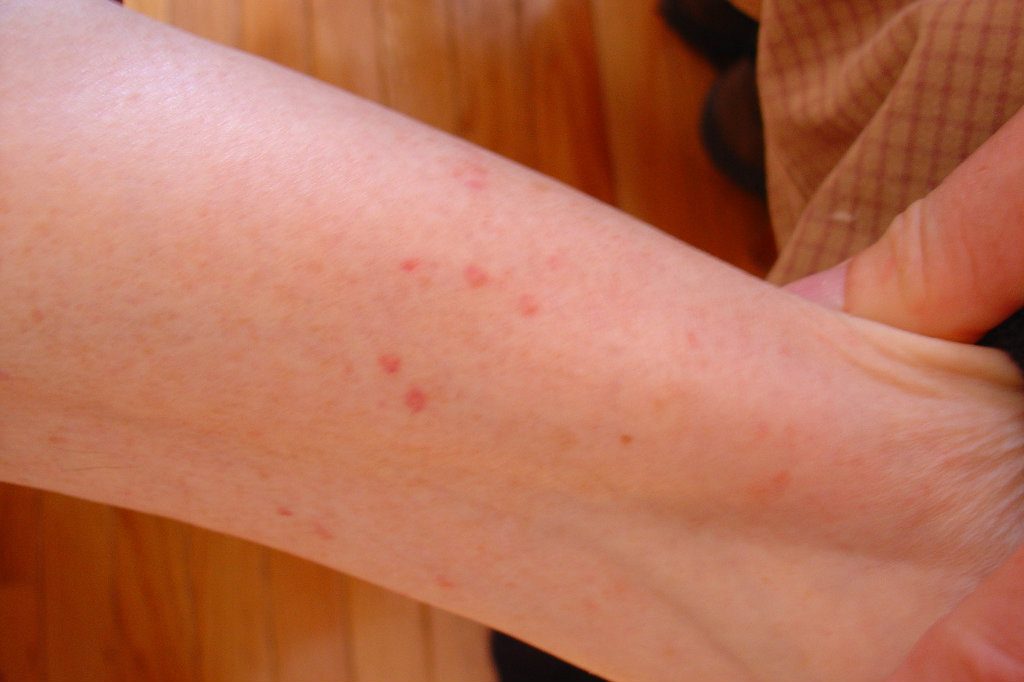
Surprisingly, out of the 2000 kinds of fleas in existence, one kind lives on humans. The remaining types of fleas cannot sustain on the blood of humans but humans can carry them from one dog to the other.
Thus, fleas in humans are very rarely seen, but we still need to be careful about our environments to keep ourselves and our beloved pets free from evil forces such as fleas.
We brought you all we could for spreading the understanding of fleas in dogs.
Keep on coming back for more in the world of dogs.
Happy Petting to You Guys!





